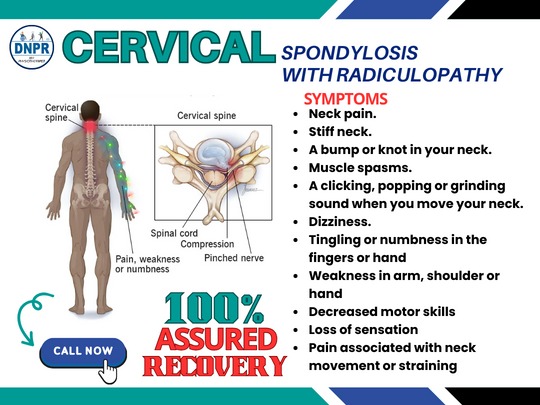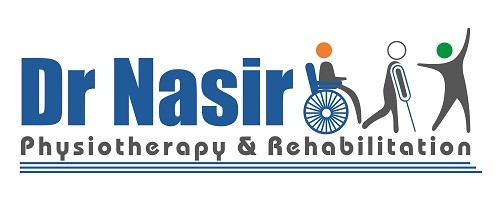
Physiotherapy for Cervical Spondylosis
Cervical spine
Consists of 7 vertebrae
- Functionally the cervical spine is divided into two regions the upper cervical spine or craniovertebral region and the lower cervical spine.
- There is an intervertebral disc between two vertebrae and is composed of an annulus and a nucleus, the superior and inferior borders are cartilaginous endplates of adjacent vertebrae.
Spondylosis
- Condition of pathological change the cervical column.
- Often called as degenerative disc disease, degenerative spondylosis and spondylitis deformans.
- MRI or other scans reveal narrowing of disc height, presence of osteophytes in the disc margins and posterior zygoapophyseal joint being osteoarthritic.
- Accounts for 2% hospital admissions for neck pain
Cervical spondylosis
- Osteoarthritic degeneration of the cervical spine.
- Wear and Tear due to repetitive motion and activity leading to degeneration.
- Usually patients present a history of faulty posture, prolonged immobilization due to an injury or repetitive trauma.
- Commonly evident in C5-C6, C6-C7 & C4-C5.
- Majoritarily patients are between the age group 40-60, women are more affected than men with cervical spondylosis
- Very common these days because of work from home jobs or desk jobs.
- Significantly leads to Cervical Radioculothy, Cervical Myelopathy and Axial Joint Pain
- The cause of pain is slow and prolonged , patients feel mild cervical pain in the early days.
- Morbidity ranges from chronic neck pain, radicular pain, reduced range of motion, headache, myelopathy leading to weakness, imparted fine motor co ordination leading to quadriparesis.
We at DNPR are experts in physiotherapy for Cervical Spondylosis.
Causes:-
- An old injury
- Poor posture
- Repetitive neck movements
- Being over weight
- Over load activities, like heavy lifting, bending and twisting.
- Spinal injury
Risk Factors
- Age group
- Head or neck trauma
- Previous cervical spine injury
- Cervical myofacial strain.
- Genetic predisposition
Symptoms
- Axial neck pain
- Cervical spondylotic radiculopathy
- Cervical spondylotic myelopathy.
- Headache
- Dizziness
- Heaviness
- Loss of motion
- Loss of activity
- Chest pain
Medical management-
- NSAIDS
- ANTACIDS
- CALCIUM THERAPY WITH VITAMIN D-3
- MUSCLE RELAXANTS
Surgical Management
- Anterior decompression and fusion
- Posterior approach
The non operative, conservative treatment is available through physiotherapy for neck pain using modalities like SWD, longwave, US & TENS and Manual Therapy like Manipulation, soft tissue release and MFR etc
However surgery should only be considered for moderate to severe mylopathy patients.
Physiotherapy Management for Cervical Spondylosis
Goals
- To relieve pain
- To provide support to the neck
- To improve and restore neck movements
- To re-educate the patient for posture correction
- To strengthen the cervical muscles
- To decrease muscle stiffness
- To decrease medicinal dependency
Techniques
- Heat therapy
- Cold therapy
- Electrical muscle stimulation
- TENS
- Exercise therapy
- Soft tissue mobilization
- Postural awareness
- Relaxation
- Traction
Physiotherapists in our team carry DR NASIR’s 15 year legacy of pain management and believe in eradicating the pain from the root cause.
Hence every treatment surpasses multilevel quality checks, to ensure the best physiotherapy treatment.
Call us now at 9891878108/9891878611 to take the first step towards a pain-free life.
Leave a reply

Leave a reply